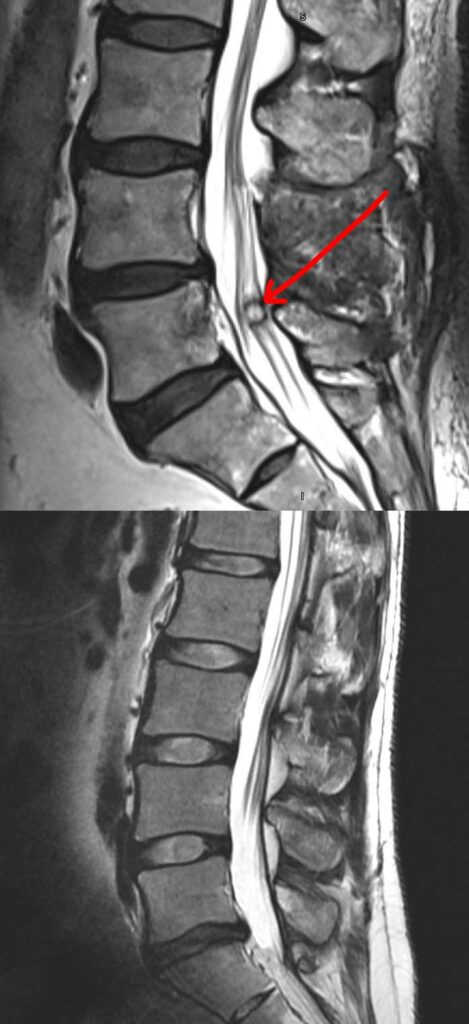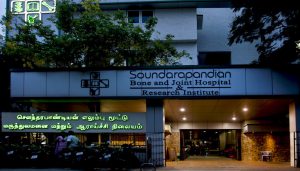Synovial Cyst of the Spine
A synovial cyst is an abnormal fluid-filled sac in joints in the spine. They occur mainly as a result of the degeneration of a facet joint of the vertebrae of the spine. These facet joints are the joints between the bony projections at the back of the vertebrae. The most common site of occurrence is in the lumbar region, that is, the lower back although it has been reported in other sites. Read More
Top Doctors For Synovial Cyst of the Spine Treatments
Top Hospitals For Synovial Cyst of the Spine Treatments
Synovial Cyst of the Spine
A synovial cyst is an abnormal fluid-filled sac in joints in the spine. They occur mainly as a result of the degeneration of a facet joint of the vertebrae of the spine. These facet joints are the joints between the bony projections at the back of the vertebrae. The most common site of occurrence is in the lumbar region, that is, the lower back although it has been reported in other sites.

Synovial cysts are none cancerous and are uncommon. Oftentimes, their presence elicits no symptoms. They can, however, predispose the individual to spinal stenosis.
Development of a Synovial Cyst
The breaking down of a facet joint brings about an increase in synovial fluid than normal. This fluid is necessary for the lubrication and proper movement of the damaged joint. However, a cyst may develop in response to the extra fluid. The excess fluid in a section of the synovial lining or sac of the joint may eventually lead to a synovial cyst.
Predisposition
Synovial cysts are more common in age-related degeneration of the bone. It is prevalent in adults ages 65 and above. Systemic diseases that affect the joints, like rheumatoid arthritis, can also be associated with synovial cysts.
Symptoms Associated With Synovial Cysts
Symptoms present in synovial cysts of the spine are dependent on the size, location, and impact of the cyst on surrounding nerves and structures.
In some cases, patients may not experience any symptoms. The common symptoms usually include one or more of the following:
- Sciatica: This refers to pain in one or both legs which may radiate down the back of the leg and foot. It is also called Lumbar radiculopathy.
- Numbness and tingling on both legs.
- Neurogenic claudication: This refers to a painful and cramping feeling in the hindlimbs. There may also be weakness and heaviness in both legs. This happens as a result of the pinching of the spinal nerves in the lumbar region.
- Muscle weakness which may include foot drop.
- Pain in one or both limbs while standing which is relieved on sitting. This occurs due to a reduction in spinal pressure while sitting since the spinal canal is extended rather than compressed further.
- Pain in the lower back
- Difficulty moving the limbs
- Diminished reflexes
- Alterations in bowel or bladder function
- On rare occasions, paralysis of the hindlimbs.
Diagnosis of Spinal Synovial Cysts
Following a complaint of one or more of the above symptoms by the patient, the medical personnel performs an in-depth physical examination with complete history. Blood work would also be performed (a complete blood count and serum biochemical analysis). These would help assess the organs and possible co-infections and complications in the body.

Further tests include:
- X-ray: Test that uses invisible electromagnetic energy beams to visualize bones. This would help in determining the possibility of spinal injuries, disc displacement, and stenosis.
- Magnetic resonance (MR) imaging: A diagnostic procedure that uses a combination of large magnets, radio frequencies, and a computer to produce detailed images of soft tissues and bones. This is better in the diagnosis of spinal synovial cysts since X-rays are not good for soft tissue abnormality detection. It can be used to detect tumors.
- Computed tomography (CT) scan: A diagnostic imaging procedure that uses a computer and X-rays to produce images of bones and soft tissues. This is better than X-rays to rule out soft tissue involvement in spinal synovial cysts.
Differential Diagnosis
- Tarlov cysts: these contain cerebrospinal fluid rather than synovial fluid
- Ganglion cysts
- Bursitis
- Migrated herniated disc
- Schwannoma
- Cystic neurofibroma
- Perineural cyst
- Ligamentum flavum cyst
- Meningioma
Treatment of Synovial Cysts of the Spine
The treatment of synovial cysts of the spine is dependent on the extent of complications involved. It can be surgical or non-surgical. The goal of surgical treatment is to remove the cyst and decompress the spinal cord and nerve roots.
There are three main non-surgical treatment options for synovial cysts in the lumbar spine:
Observation and Activity Modification:
This approach is used when the synovial cyst is not creating a lot of dysfunction or pain in the patient’s daily life. it requires an adjustment in lifestyle since the pain is observed in certain positions while sitting, standing, or lying down.
General Non-Surgical Treatments:
In conjunction with activity modification, patients will typically find pain relief with a range of possible nonsurgical remedies. These may include:
- Application of hot or cold packs: This is especially effective for activity-related pain and discomfort.
- Pain medications: This includes non-steroidal anti-inflammatories such as ibuprofen, acetaminophen, diclofenac, etc.
- Exercise and rest for brief periods daily.
Injections for Synovial Cysts:
Two different types of injections are used in the management of synovial cysts. They are facet injections and epidural injections.
- Facet injection: A needle is inserted into the facet joint and the cyst is drained by aspiration. Subsequently, a steroid is injected to help in the reduction of the inflammation.
- Epidural steroid injection: This involves the injection of a steroid into the epidural space around the cyst. It helps to reduce the pain but not the size of the cyst. The pain relief is temporary and it has a 50% success rate.
Surgical management of Spinal synovial cyst
Surgical management is indicated when the quality of life is greatly affected by the cyst. In most patients, it is advisable to try a non-surgical approach first. The two surgical approaches include:
Micro-decompression Spine Surgery: This is performed if there is no instability associated with the cyst. This is minimally invasive and suitable for younger patients and patients with minor discomfort. However, the cyst has a high likelihood of re-occurrence since it does not correct the initial joint abnormality that led to the cyst formation.
Decompression with Spine Fusion Surgery: The removal of the cyst and joint fusion is the most reliable treatment method for a synovial cyst. This stops all the motion at that level of the spine, thus preventing reoccurrence. It has a very high success rate (90-95%) but is difficult to perform.
Conclusion
It is necessary to consider certain factors such as the level of pain, duration of symptoms, and the level of impaired function associated with spinal synovial cysts to decide on the best treatment approach. Other factors such as age and health status should also be considered.































































